A fire killed four of his children. The survivors keep him going
Published in Lifestyles
ST. PAUL, Minn. — Last Halloween, the Vang siblings, Hnub Qub Ci Ntshiab, 3, and Cag Kub, 7, went trick-or-treating in St. Paul’s Cathedral Hill neighborhood, near their mother’s nursing home. The kids didn’t have costumes and toted their bounty in flimsy plastic bags. But they did, miraculously, have each other. And they had their parents: their father, Pa Cheng Vang, and mother, Ker Lor, whose wheelchair their dad pushed along the bumpy, rain-slicked sidewalk.
The annual sugar-charged rite was significant to Pa Cheng, 26, who had arrived in St. Paul from a Thai refugee camp on this very holiday two decades prior. The free candy had given young Pa Cheng a favorable, if mistaken, impression of his new home. “I thought: This is pretty nice,” he recalled. “The next day, I asked my brother: Let’s go trick-or-treating again!”
Pa Cheng now passed the ritual on to his children, knocking on doors of stately Victorians and brick rowhouses, cradling his daughter on his hip.
One candy-giver nodded to Ker, who was waiting on the sidewalk, bundled in blankets, her feet swaddled in smiley-face socks. “Is that your family?” the man asked.
“Yes,” Pa Cheng replied, a simple answer that didn’t reveal the full story. Their family had once numbered eight. Four of the couple’s children, ages 1 to 5, had died after a January 2024 house fire— among the deadliest in St. Paul history — that severely disabled Ker and injured the two surviving children.
The family endured among the worst of all days imaginable. Now here they were, nearly a year later, their incomprehensible loss invisible to the other revelers, celebrating a holiday no longer associated with its roots in honoring the dead.
After an hour or so, Cag Kub’s gait looked stiff. And Hnub Qub Ci Ntshiab, riding on Ker’s lap, had to go potty. The four headed back to the nursing home when the wheelchair hit a bump and the 3-year-old tumbled to the sidewalk.
Pa Cheng lifted his daughter in his arms and comforted her — one more moment in an overwhelming journey. Many more challenges lay ahead: Shoring up his family’s well-being and stability; resolving a custody dispute with Ker’s relatives; moving back to his fire-ravaged home.
So Pa Cheng put one foot in front of the other and carried on. He pushed his wife’s chair, his still-teary daughter clinging to his back, and called out to his son not to get too far ahead.
Fun times
Pa Cheng was a student at St. Paul’s Central High School when he met Ker through a friend. It was Valentine’s Day and Ker made quite an impression, dressed all in red, with red lipstick. “I was like, ‘Whoa!’” Pa Cheng recalled. They quickly connected over shared childhood experiences and Pa Cheng found he could open up to Ker.
The two married in a Hmong religious ceremony and Pa Cheng juggled college classes and multiple jobs with parenting the couple’s first son and twin daughters. After three more children arrived, Pa Cheng got hired as a maintenance technician servicing mail-sorting machines on the overnight shift. Ker, who had once interned in Mayor Melvin Carter’s office, worked as a teacher’s assistant at the older children’s school.
Each of the children had a distinct personality. Cag Kub, the eldest, most resembled Dad, but with Mom’s smarts, Pa Cheng observed. “The way he walks, laughs and even the way he thinks is similar to how I always think,” he said. “But he got his mom’s brain.”
Of the twin girls, the older one, Siv Ntshiab, had a knack for arts and crafts and abundant patience. The younger one, Ntshiab Si, was feistier. Their second son, Muaj Tshav Ntuj, was known for protecting his siblings, and Hnub Qub Ci Ntshiab, the youngest daughter, as being very social and energetic. The baby, Muaj Cag Txuj Vaj, had recently learned to walk, albeit with a funny wobble.
Even as the older ones grew out of being carried, they still liked being rocked and lullabies. Cag Kub included. “Once a while, he will come to me and say, ‘Can I be a baby on your lap?’” Pa Cheng said.
After working overnight, sometimes Pa Cheng would be so tired, he’d set the kids up with toys and a “Baby Shark” video so he could catch a few winks. But he loved being surrounded by his brood. “Fun times,” he said. “I miss those times.”
The fire
On Jan. 3, 2024, at 1:31 a.m. a female caller, presumably Ker, called 911 to report the home was on fire. Before the dispatcher could get details, the line went silent, except for the blare of a smoke detector.
Three minutes later, the first fire truck arrived. Medical crews whisked Ker and all six children to area hospitals.
Pa Cheng was at work when he got a call from the police. He raced to Regions Hospital, where he found Ker and the children in grave condition. Their burned skin was red and slathered with ointment. They had ash on their faces, which were so swollen that Pa Cheng had to guess who was who based on their body sizes. The twins, he couldn’t tell apart. He felt an overwhelming sense of panic.
Just the day before, Pa Cheng had been sledding with some of his kids in the alley behind their home. Now his entire family was barely clinging to life. “It’s hard to believe it happened so quick,” he said.
Smoke inhalation can render a person unconscious within minutes and, by depriving the body of oxygen, cause brain death and heart failure. The family’s eldest twin died several hours after she was hospitalized. Within days, her twin sister, 4-year-old brother, and 1-year-old brother also succumbed. Grieving Pa Cheng sat vigil at the hospital, where Ker and the two other children remained in comas.
Then, nearly two weeks after the fire, Hnub Qub Ci Ntshiab regained consciousness. Pa Cheng felt immense relief that at least one of his children had come back to him. He wrote on the family’s GoFundMe page how grateful he was to at least have “one bright star shine on my shadow.”
In the following weeks, as Pa Cheng planned funerals, Cag Kub and Ker opened their eyes, too. While Cag Kub quickly began speaking and moving, Ker’s injuries were more severe. At first, Pa Cheng didn’t know if she recognized him.
St. Paul fire inspectors determined that the fire was started by a large candle in the living room that Pa Cheng had been burning for several days in honor of the Hmong New Year. On the evening before the fire, the wax was nearly consumed. The inspector’s report noted that when two-wick candles burn almost to the bottom, the liquified wax can reach ignition temperature, resulting in a fire with a much larger flame than that produced by a candle wick.
As Cag Kub recovered, he shared what he remembered about the fire. Pa Cheng says Cag Kub told him that he and his 4-year-old brother had woken up in the middle of the night and were arguing about watching a video. When they became aware of the fire, they tried, unsuccessfully, to put it out. A couple of the other siblings had awakened and were running around, Cag Kub had said, and he saw several “faint out.”
Since the children were so young, they’d never trained for such an emergency. Pa Cheng believes Cag Kub and his siblings didn’t realize the gravity of the situation. “I tell him, ‘How come you not go wake Mommy up?’ And he said, ‘We don’t want to wake Mommy up because we’re afraid she’ll spank us.’”
‘You don’t wake up’
Though Hnub Qub Ci Ntshiab and Cag Kub have both made remarkable recoveries, cognitive and physical disabilities may linger. Cag Kub lags his classmates academically, and Pa Cheng delights when he gets a couple of correct answers on a spelling test. At his temporary home — Pa Cheng and the children moved in with one of his brothers in St. Paul — Cag Kub acts like his peers. He likes Cheetos, YouTube videos and Minecraft. He shows off to his dad by balancing objects on his head.
After Cag Kub regained consciousness, Pa Cheng had to tell him his siblings had died — a concept Cag Kub understood as a sort of underground slumber. “You don’t wake up,” Pa Cheng told his son. “Your soul will go to heaven. That’s where your siblings are.”
Cag Kub then asked why he was alive, and his siblings weren’t. And if he had perished instead, would his siblings still be here?
Pa Cheng offered a reason for his son’s survival: “So you can continue stay with daddy, for them.”
A legal challenge
When the children visited Ker at the nursing home, she’d snuggle them as best she could, despite limited ability to move her head and limbs. She and Pa Cheng would talk a bit and he’d often feed her a meal. On one visit, Ker polished off a container of takeout noodles and, grinning, indicated to Pa Cheng she wanted to lick the sauce out of the container.
Ker can maintain simple conversations, Pa Cheng says, but expressing more complicated thoughts can be challenging, and an injury to her tongue makes her speech difficult to understand. Sometimes, Pa Cheng says, she seems overcome with emotion as she adjusts to her new reality.
“The other day I was feeding her, and she just started crying,” he said. “And I was asking why she’s crying? And she said she’s crying because of how she is right now.”
In August, one of Ker’s brothers petitioned the court to become her guardian and conservator. Pa Cheng and Ker’s lack of a marriage license limited Pa Cheng’s legal rights. Pa Cheng says he had conversations with Ker’s family about her care and felt blindsided by the court summons. Ker, through her attorney, filed an objection.
Part of the conflict centered around who would serve as Ker’s personal caregiver, Pa Cheng said. He’d gone back to work over the summer and Ker’s family wanted him to quit to take care of Ker. But he felt that his continuing to work would be better for the family’s long-term financial stability. “When it comes to my kids and work and family, I gotta think reality,” he said. “I can’t risk quit my job.”
But having an outsider provide personal caregiving is something of a cultural taboo, especially among older Hmong people, Pa Cheng explained. And he said none of Ker’s family members offered to serve as a personal care assistant.
While Ker’s brother’s questioned her capacity to make personal decisions in the custody petition, Ker’s advocate with the state Office of Ombudsman for Long-Term Care, Patty Odlaug, said Ker had repeatedly communicated her wishes. “She is very capable of expressing what she wants and who she wants to be with,” Odlaug said. While Ker’s speech is limited, when Odlaug asked directly whether she would like to live with Pa Cheng, Ker replied: “Yeah.”
In January, Ker’s brother withdrew his petition and a judge dismissed the case.
Homecoming
By April, repairs to the family’s home were finally finished. The space was mostly empty, but with new drywall, windows, kitchen cabinets and appliances, bright blue-and-green paint, there was no trace of the blaze.
On a sunny Friday afternoon, Pa Cheng put dishes away while he waited for Ker to be discharged from the nursing home. He’d made many preparations for her arrival, including securing a hospital bed and patient lift. He’d scattered dried beans on the floor, a Hmong tradition to bless a new home. That morning, he’d driven to a farm two hours away to procure a pig for the next day’s shaman ritual.
Over the past months, Pa Cheng had been talking to a therapist and regularly seeing his father and siblings, most of whom live nearby. But the rift with Ker’s family, he said, had not been repaired.
He calls his wife and kids “the reason why I got here, and where I am today,” and remains hopeful that time and togetherness will be a balm. Family members brought over a couch so Pa Cheng and the kids could spend the night with Ker in her room.
If there’s anything Pa Cheng wants others to learn from his experience, it’s not to forget the preciousness of loved ones, amid all life’s distractions.
“I want everybody to hold that feeling of when you really want that child, when you really want that wife,” he said. “Don’t ever let it go.”
©2025 The Minnesota Star Tribune. Visit at startribune.com. Distributed by Tribune Content Agency, LLC.


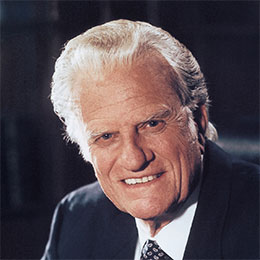




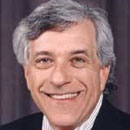

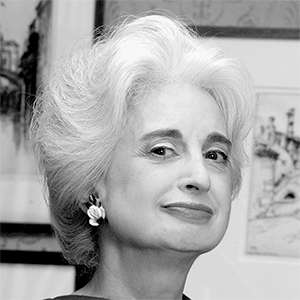

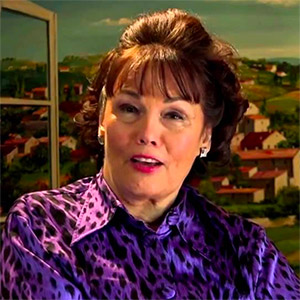



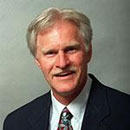







Comments